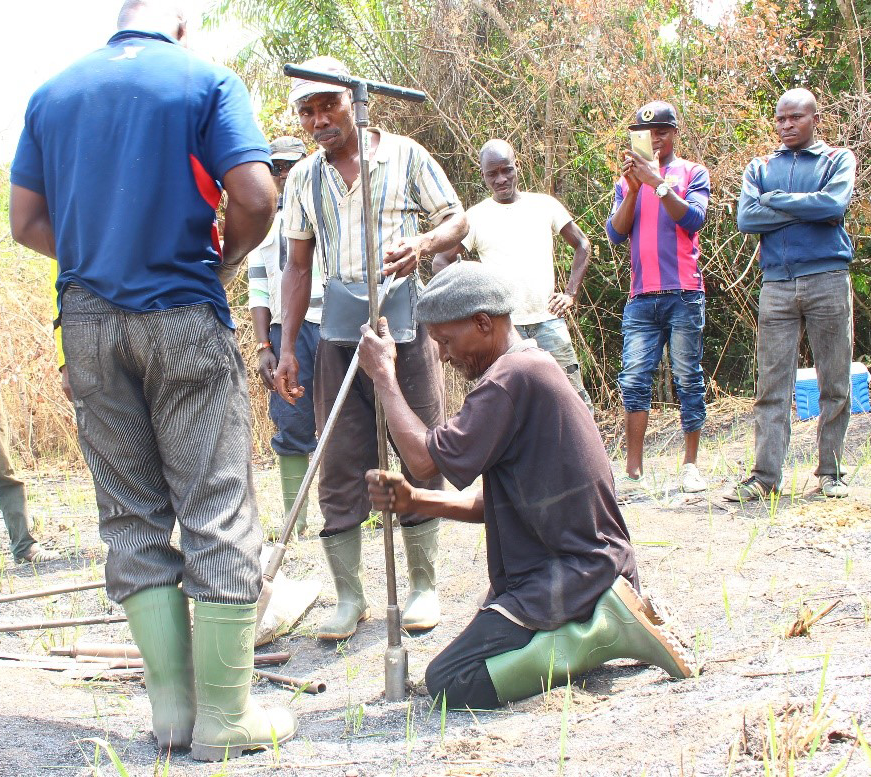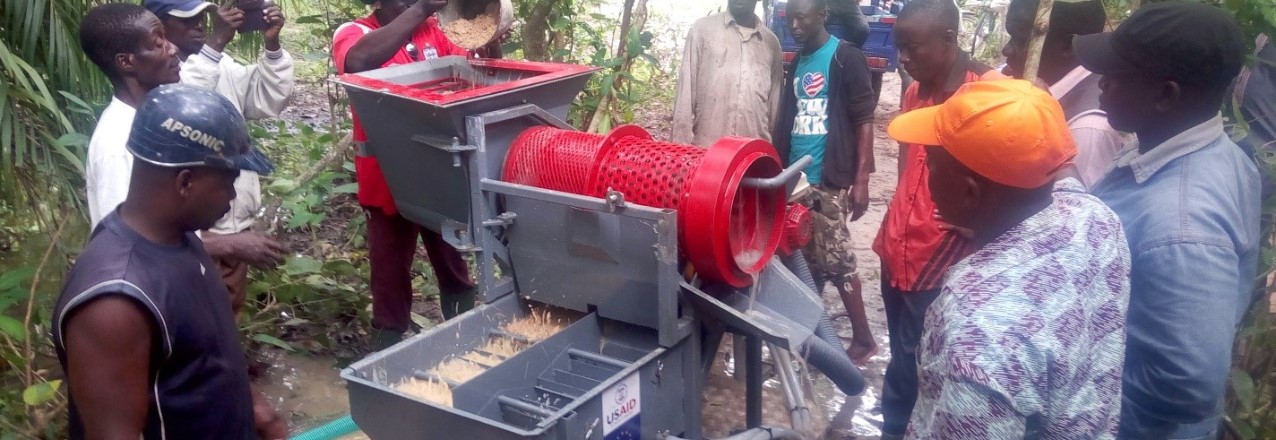In the diamond mining regions of Côte d’Ivoire, the introduction of new technology is increasing the volume of stones that enter the legal chain of custody, leading to increased earnings and more sustainable livelihoods for miners.
During a recent test of the first ever diamond washplant for artisanal miners in Côte d’Ivoire, Bobochi, the president of the local miner’s cooperative in Oussougoula village, recounted how the “jiggy-boy” revolution in the 1950s changed his life.
At the time, some foreign-owned semi-industrial companies were closing operations in the diamond mining area of Séguéla, and artisanal miners moved in, hoping to find diamonds that may have been left behind. Few knew the proper technique for swishing around the gravel in a way that removes silt and sand, while concentrating the denser diamonds. After learning this swishing technique from a Sierra Leonian migrant worker, young Bobochi would roam the bush shouting “jiggy-boy!” to advertise his swishing services.

Bobochi has been an artisanal miner ever since, thanks to the technology knowledge transfer from the Sierra Leonian. Since then, the round jig he used gave way to a rectangular one. Another simple but also revolutionary change included water pumps which made it possible to mine year-round.
Now the Property Rights and Artisanal Diamond Development (PRADD II) project enters into the picture. The USAID and EU-funded PRADD II project supports governments to implement mining best practices in Côte d’Ivoire and the Central African Republic, and promotes good governance of the mining sector at the international level through the Kimberley Process, the international mechanism that prevents rough diamonds from fueling conflict. After years of consultation with artisanal miners like Bobochi, PRADD II introduced two new game-changing technologies: a hand auger and a semi-mechanized portable washplant.
The hand auger helps identify the location of relatively shallow underground diamond deposits located in and around the meandering rivers of Séguéla. The auger is a game-changer for miners who use it to locate diamond gravel deposits without spending weeks in fruitless digging of deep test pits. By twisting the auger into the ground, core soil samples are drawn. A certain type of gravel indicates the probable presence of diamonds. When this diamondiferous layer is discovered, miners like Bobochi go to work to excavate large pits to the gravel level, draw it out, and then wash it to remove the diamonds. The hand auger was introduced by the U.S. Geological Survey in 2015 as part of research collaboration between PRADD II and SODEMI, a company partially owned by the government of Côte d’Ivoire.
Meanwhile PRADD II also imported a customized washplant built in Ireland. As the picture here shows, this is a portable machine that simultaneously sifts and washes diamondiferous gravel. This saves miners an enormous amount of time normally spent sifting tons of gravel by hand. In addition, the beauty of the unit is that it uses the same motors found in locally available water pumps. The designer also shared the washplant specs with local blacksmiths, allowing the washplant to be fabricated and fixed locally. Local mechanics worked with a pioneering young entrepreneur – the recipient of a PRADD II sponsored business plan competition – to resolve several technical challenges. The foundation for the scaling-up of the washplant technology is now in place.
The washplant is creating both apprehension and excitement. Some old hands like Bobochi are skeptical as they remember when foreign diamond companies used machines decades ago that apparently hid diamonds, or didn’t work well enough, leaving missed diamonds in the gravel for artisanal miners like him to pick through. Diamonds financiers are very enthusiastic, however, as the machine will reduce the chances of theft and loss, both problems in manual washing. For the same reason, Ivorian authorities hope this will increase the volume of diamonds that enter the formal chain of custody, and workers are looking forward to less time standing in dirty water under the hot sun.

For the diamond mining worker cooperatives of Séguéla, the saved time—the machine can do a day’s work in 15 minutes—translates into saved money. For the first time, cooperatives are thinking of operating sites themselves without financing from outside buyers, as a result of this new equipment and all of the potential hours of labor saved. Helping overcome this key obstacle of access to finance is another major benefit of this new equipment.
As with all game-changing innovations, some will benefit more than others, and PRADD II is monitoring the test phase of the washplant. The communities are as well, since just as the round jig created new opportunities for “jiggy-boys”, the diamond sorting machine could do the same for a new generation. For miners like Bobochi, this latest technological revolution will save both time and money, meaning local miners can invest profits from diamond mining in other potentially viable opportunities, including profitable cashew tree production, improved housing, and education for their families.


